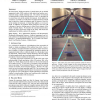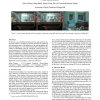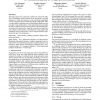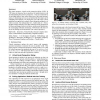VR
2009
IEEE
14 years 7 months ago
2009
IEEE
Computer-generated facial avatars have been increasingly used in a variety of virtual reality applications. Emulating the real-world face sculpting process, we present an interact...
VR
2009
IEEE
14 years 7 months ago
2009
IEEE
In order to increase a user’s sense of presence in an artificial environment some researchers propose a gradual transition from reality to the virtual world instead of immersin...
VR
2009
IEEE
14 years 7 months ago
2009
IEEE
We tested users’ depth perception of virtual objects in our mobile augmented reality (AR) system in both indoor and outdoor environments using a depth matching task. The indoor ...
VR
2009
IEEE
14 years 7 months ago
2009
IEEE
We investigate the effects of input device latency and spatial jitter on 2D pointing tasks and a 3D movement. First, we characterize jitter and latency in a 3D tracking device and...
VR
2009
IEEE
14 years 7 months ago
2009
IEEE
VR
2009
IEEE
14 years 7 months ago
2009
IEEE
We present a novel calibration framework for multi-projector displays that achieves continuous geometric calibration by estimating and refining the poses of all projectors in an ...
VR
2009
IEEE
14 years 7 months ago
2009
IEEE
This paper reports one experiment conducted to evaluate the influence of oscillating camera motions on the perception of traveled distances in virtual environments. In the experi...
VR
2009
IEEE
14 years 7 months ago
2009
IEEE
This paper proposes virtual social perspective-taking (VSP). In VSP, users are immersed in an experience of another person to aid in understanding the person’s perspective. User...
VR
2009
IEEE
14 years 7 months ago
2009
IEEE
In this paper we introduce a “Spatialized Haptic Rendering” technique to enhance 6DOF haptic manipulation of virtual objects with impact position information using vibrations....
VR
2009
IEEE
14 years 7 months ago
2009
IEEE
How do users of virtual environments perceive virtual space? Many experiments have explored this question, but most of these have used head-mounted immersive displays. This paper ...





